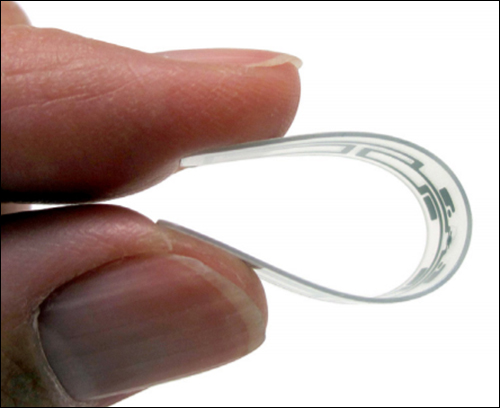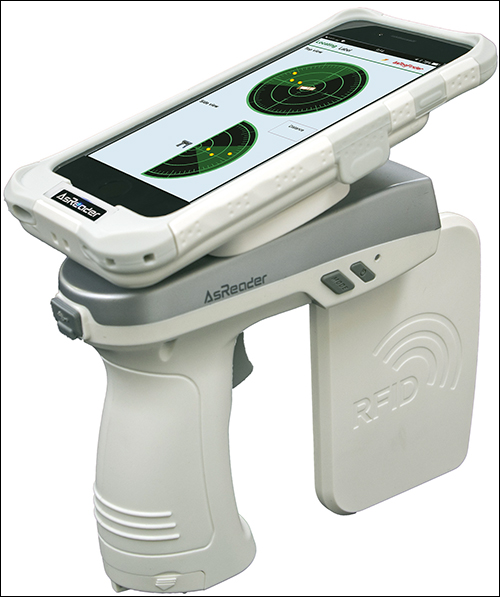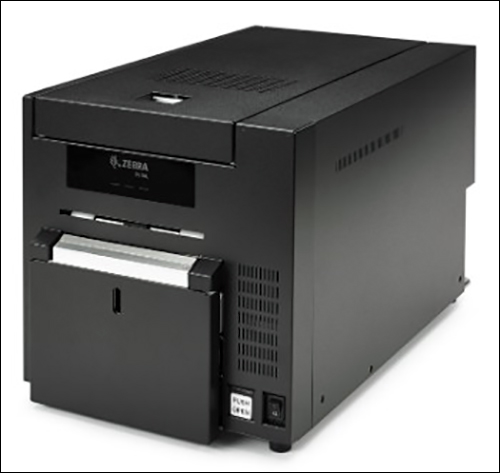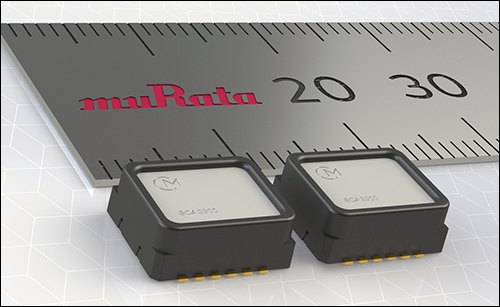The following are news announcements made during the past week by the following organizations:
Fujitsu Frontech North America; Altova; CDO Technologies, AsReader; MSS Software; Zebra Technologies; Murata Americas; Xerafy, and Frost & Sullivan.
Fujitsu Announces Ultra-Thin Washable UHF RFID Tag for Fashion Apparel, Accessories
Fujitsu Frontech North America has announced that it has developed what it calls the thinnest UHF RFID tag for high-fashion apparel, garments and accessories. The new WT-A533L washable UHF RFID Fashion tag mini measures only 7 millimeters in width, enabling fashion apparel manufacturers and garment rental companies to easily insert the tag into garments and high-fashion items without using a pouch or heat-seal tape.
Using an RFID tag in fashion items assures trackability, reduces loss and provides positive item identification, according to the company. Fujitsu showcased the WT-A533L Fashion Tag mini, along with its entire family of washable RFID tags, at RFID Journal LIVE! 2017, held earlier this month in Phoenix, Ariz.
“Tracking fashion garments, formalwear, and accessories is critical to a successful garment rental enterprise. The new, slimmer, Fashion tag mini allows tags to be easily attached to existing inventory items providing greater flexibility and lower costs for upgrading garments and accessories,” said Randy Fox, Fujitsu Frontech North America’s VP of sales and marketing, in a prepared statement. “Fashion garment designers and manufacturers will benefit from its small, almost imperceptible design allowing them to provide positive identification of their high value items while reducing incidents of loss and return fraud.”
The new WT-A533L Fashion tag mini is manufactured with transparent materials, the company reports, which makes it virtually invisible when sewn into clothing or accessories. Measuring only 7 millimeters by 55 millimeters by 0.3 millimeter, the Fashion tag mini can easily be sewn into sheer garments, lace, silks, formalwear, T-shirts and accessories. The new tag is designed for permanent installation into high-value fashion apparel, the company adds, and is safe for home washing, dry-cleaning and ironing. Fujitsu expects the tag to become production-available this summer.
Altova Launches Cross-Platform Mobile Development Framework With NFC Features
Altova has announced the release of its MobileTogether 3.2 cross-platform mobile-development framework. This release introduces more than 18 new features for building sophisticated, data-centric mobile apps. Highlights include support for Near Field Communication (NFC), the ability to access mobile device contacts, text-to-speech functionality, and enhancements for table and chart creation.
“With each new release of MobileTogether, we’re adding powerful functionality that broadens the scope of what’s possible for app developers to create,” said Alexander Falk, Altova’s CEO and president, in a prepared statement. “This version adds almost 20 new ways to deliver the tools end users need.”
NFC is a set of communication protocols that allow two devices to exchange messages when within a few centimeters of proximity. Android Push is now also supported. MobileTogether supports the pushing and receiving of NFC messages, including text, URI, MIME media, application records and more. The system allows the following functions:
Access mobile device contacts: Apps built in MobileTogether can now access information from a user’s contacts stored on the device. This, for example, helps a user to send messages via email or SMS, or to place a call from within the app.
Text-to-Speech: This makes it easy to add text-to-speech functionality to apps so that the device’s built-in speech synthesizer will read text aloud to a user, the company reports. This is suitable for situations in which a user may need to use the app without looking at the screen, such as hands-free scenarios.
Dynamic table growth: In addition to dynamic rows, tables can now have dynamic columns, meaning they can be added on the right-hand side of the table as needed to grow the table, based on the number of instances in which an element occurs. The ability to dynamically grow a table from left to right, top to bottom, or both makes it possible to define tables for virtually any scenario, the firm explains.
The on-demand loading of tables is a performance-optimizing feature for apps that include large, scrollable tables. The app developer can specify the number of table rows that can be loaded at a time.
CDO’s Asset-Tracking Solution Supports AsReader’s UHF RFID Reader-Writers
CDO Technologies, the creators of the Critical Asset Tracking Solution (CATS), has announced support for AsReader‘s UHF RFID reader-writers. End users may now use the Apple iPhone, iPod Touch and iPad equipped with an AsReader RFID reader-writer and the CATS application to inventory assets containing UHF RFID tags.
“Many of us have experienced frustrating situations where important tools or expensive machinery are misplaced in warehouses or left out in the field,” said Robert Zielinski, CDO Technologies’ director of commercial marketing, in a prepared statement. “The CATS system can help workers locate tagged items quickly and efficiently, helping companies save on employee search time, product and tool replacement—and relationships.”
The CATS system is used by private and public companies to facilitate the tracking and finding of manufactured products and tools in warehouses and in the field. Missing items, such as tools, equipment, client files, electronic components or customer information, can hinder workflow efficiency and be costly to an organization, the company explains. According to CDO Technologies, using CATS to capture an asset’s last known location and leveraging an RFID device’s capability to quickly zero in on missing items can shorten search times and reduces costs.
“As a global technology firm, AsReader understands the importance of visibility and data analysis,” said Robert Yount, AsReader’s senior account executive, in the prepared statement. “Providing an affordable RFID solution for millions of iOS users to leverage CATS to track and find assets will greatly benefit today’s organizations.”
CDO Technologies supports a portfolio of automatic-identification data-capture (AIDC) technology and mobility solutions for federal, municipal, commercial and education markets. AIDC solutions are designed to help companies improve the visibility, accuracy and efficiency of logistics, asset-management, manufacturing, health-care and customer-service operations.
AsReader manufactures modular UHF RFID sleds and gun-style units that are integrated with iOS smart devices with short (3 feet), medium (15 feet) and long (32 feet or more) read ranges. AsReader is a member of the RAIN global alliance, and its products are compliant with GS1’s UHF Gen 2 protocol and others.
“Since CDO Critical Asset Tracking Solution was first commercialized roughly two years ago, we have seen the application used by a variety of industries to radically evolve their businesses,” Zielinski said in the statement. “By supporting AsReader devices, organizations will be even better prepared to serve their customers and deploy Internet of Things (IoT) benefits.”
MSS Software Expands Client Solutions With RFID Asset-Tracking Capabilities
MSS Software, a provider of bar-code solutions, equipment and software to clients in multiple industries, has announced the availability of a mobile RFID asset-tracking solution, known as the RFID Barcode Tracking Kit. In addition to selling hardware and software products, the company also offers a variety of equipment on a rental basis.
The RFID Barcode Tracking Kit can be purchased at MSS Software’s website. Portability is a key feature of the device, which is essentially a mobile computer, in addition to a scanner, that allows organizations to move between different locations and collect data by scanning RFID tags that may be associated with assets, badges or other inventory-related items.
The device can be customized and configured to read and write the specific RFID tags and bar codes needed by an organization. What’s more, it can read certain RFID tags from distances of up to 20 feet—a potential factor in increasing the efficiency of certain inventory-tracking situations.
According to the bar-code equipment company, the system can capture both bar codes and RFID tags. It can write RFID tags and transfer data via any type of internet connection. Beyond the mobile device itself, the kit includes a power dock, power supplies and cables.
Zebra Technologies Intros Large-Format, Direct-to-Card Printer
Zebra Technologies has announced its ZC10L large-format, direct-to-card printer, which is capable of creating durable, edge-to-edge color cards in a single printing process. The ZC10L printer enables on-the-spot customization for oversized badges for conferences, festivals, sporting events, concert tickets, passes and more.
The ZC10L is Zebra’s first printer capable of printing large-format, edge-to-edge cards without the need for reprinting, the company reports. Larger-format badges are easier to see and read, which increases security by enabling event personnel to easily identify invited guests.
With the flexible ZC10L card printer, event organizers can customize cards for each guest and add instructions or fine print on the back of the cards. Badges and passes produced by the ZC10L are printed on durable PVC material, the firm reports, and can serve as guest mementos following the event. The badge design also utilizes less PVC material than traditional badges, which helps to protect the environment.
In addition, Zebra offers synched supply kits sold exclusively for the ZC10L. These kits feature 400 PVC cards and ribbon rolls, intended to eliminate waste and mismatched supplies.
Murata Americas Releases Three-Axis MEMS Accelerometers
Murata Americas has announced the availability of its SCA3300 series three-axis MEMS accelerometer, which is aimed at a range of industrial and automotive applications. Measuring 7.6 millimeters 8.6 by millimeters by 3.3 millimeters, this surface-mount sensor offers several measurement ranges of 1.5, 3 or 6g, and features less than 10mg offset stability. It provides MEMS sensor characteristics with a non-linearity of 0.1 percent and noise density of 37 ug/√Hz, as well as an operating temperature range of -40 degrees to +125 degrees Celsius.
Functions for the SCA3300 include leveling and alignment systems, inertia measurement units for heavy machinery, navigation systems, automatic guided vehicles (AGV), and construction and surveying tools. It is suitable for high-accuracy automotive inertia sensing, the company indicates. Specific examples include autonomous driving (ADAS) and intelligent transmission control that can be enabled by sensors.
This product is packaged in a pre-molded, dual flat lead SMD housing, operates from a 3.3 VDC supply, and consumes only 1 mA during normal operation. This makes it suitable for battery-powered applications, according to the company. For example, in its low power mode, consumption drops to approximately 0.5 mA. Communication with the host application is via an industry-standard SPI interface.
The SCA3300 also meets the automotive AEC-Q100-quality standard. Furthermore, it provides continuous failsafe functions and flags for diagnostics. These include monitoring internal reference signals, techniques for verifying communication, signal saturation and over-range monitoring.
“Murata constantly strives to develop solutions that enable the industrial and automotive to reach new levels,” said Deryl Kimbro, Murata Americas’ general manager of sensor products, in a prepared statement. “The SCA3300 series demonstrates our technological, material, and design expertise.” An evaluation board is available that incorporates a Java-based GUI to graph sensor output, data logging and data-rate calculations.
Xerafy Receives Frost & Sullivan New Product Innovation Award
Xerafy has been named the recipient of the Frost & Sullivan‘s 2017 Award for New Product Innovation for RFID surgical instrument tracking systems. Xerafy’s surgical instrument tracking solution supports high-accuracy tracking and automatic processing of surgical instruments, with hospitals typically achieving a return on investment within a year of deployment.
Xerafy’s patented miniature RFID tags are specially designed and validated with the help of health-care professionals to withstand sterilization processes. RFID tags are attached securely with ISO 10993-compliant adhesive, and can withstand repeated autoclave temperatures and chemicals throughout the surgical instrument’s lifecycle. Xerafy’s system optimizes hospital workflow, provides automated traceability in real time and improves patient safety. The solution enables up to 97 percent of all surgical instruments to be tagged, enabling average cost savings of more than $3 million from increased staff efficiency and optimized operating room time.
For example, the cost of manual instrument tracking was a primary driver for Charité-Universitätsmedizin Berlin, a German hospital. The time and cost of tracking 300,000 surgical instruments was growing at an unsustainable rate, according to Xerafy. In order to properly service and document instrument lifecycles, the hospital required a technology that could bypass the identification and reading limitation inherent in contaminated instruments, while ensuring seamless tracking operations in its Central Sterile Supply department, both before and during sterilization.
In 2016, the hospital began deploying Xerafy’s autoclavable RFID tags to track instruments, and rigorous pre-deployment testing was performed. “We were able to test all the treatment processes that were used throughout the usual life cycle in test scenarios,” said Sadmir Oasmancevic, Xerafy’s head of CSSD, in a prepared statement. “There were no problems.”
The tags’ performance was established during 1,000 sterilization cycles, including exposure to chemicals, mechanical stress during transport, and material expansion during high temperatures. Similar testing on the biocompatible glue used to adhere the tags to the instruments showed no risk of dislodgement while withstanding contact with blood-, saline- and iodine-containing substances, the company reports. What’s more, the usability of the retrofitted instruments was not impaired, and suppliers confirmed that the instruments still met existing certifications.





